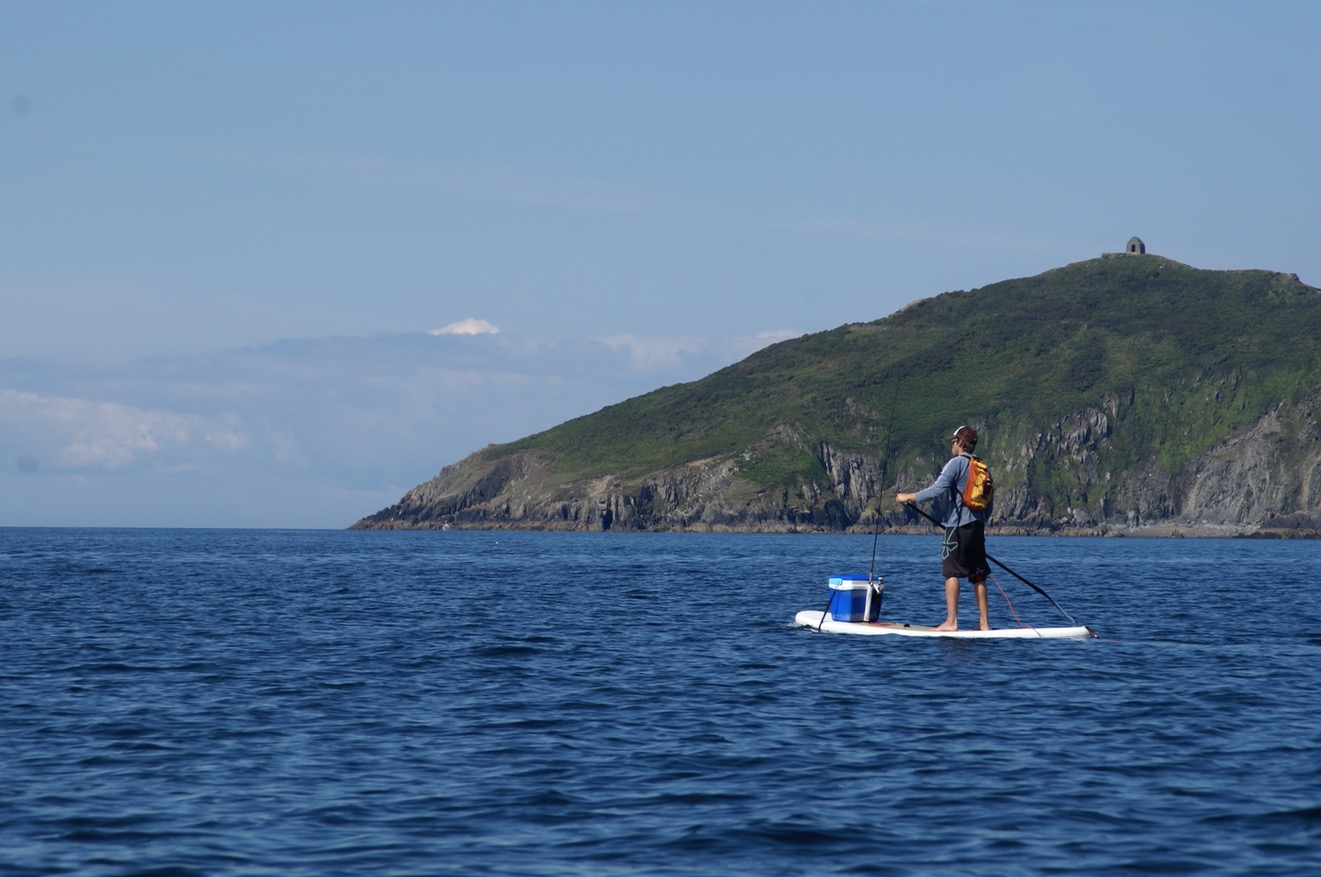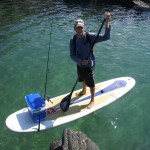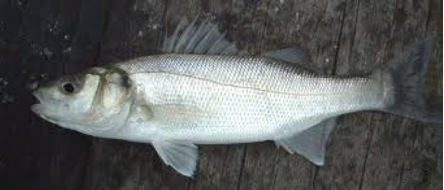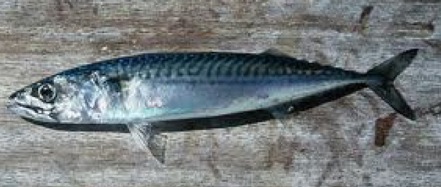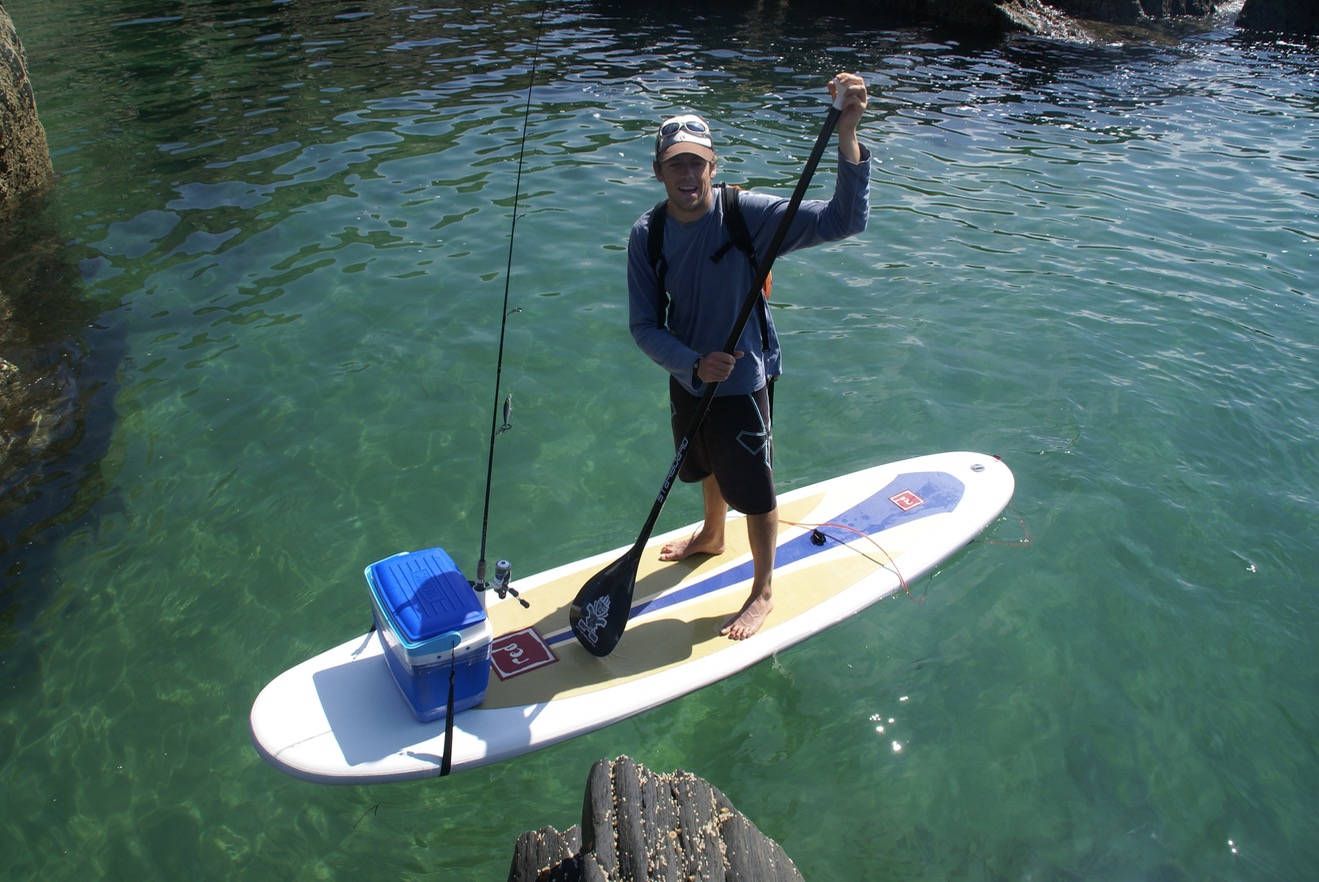
If you enjoy fishing or paddleboarding, and haven’t already, why not have a go at SUP fishing? SUP fishing is a great way to get out on the water, have fun and catch a good feed all at the same time.
You don’t have to be an expert paddleboarder to try SUP fishing but it’s probably worth getting comfortable on a paddleboard first before adding fish into the equation! Otherwise you’ll probably end up just making a big splash, getting very wet and scaring off the fish!
It doesn’t have to be expensive to go SUP fishing. Infact all you need to get started is your paddleboarding equipment (board,paddle,leash) and either a hand line or a small fishing rod. A simple hand line is probably the easiest to take… just throw the line out behind you, put it in your pocket, forget about it, go paddling and then hope you catch something on the way! However the advantage of a rod is that it allows you to cast into small bays and around rocky out crops where many fish can be found. It really depends whether fishing or going for a paddle is your main purpose?
To help maintain your balance and to ensure you have enough space for all your fishing equipment and fish too, the bigger and wider your board the better. Specialist sup fishing boards are available on the market, for example the Starboard Fisherman 11’2″ x 37″. However any paddleboard over approx 10’6″ x 32″ will do the job. I often go out on a Red Air 10’6/10’8 but I have also been known to take my fishing rod out with me on a Starboard 7’11!!!
If you decide to take your fishing rod then you’ll find it useful to have somewhere to put your rod as you will not be able to hold you rod and paddle at the same time. There is some amazing equipment designed specifically for SUP fishing, however getting yourself set up for SUP fishing does not have to be expensive, and you can easily make your own.
All you need is a mid sized coolbox (no wider than you board). This makes a great seat, snack box and hopefully a place to put all your fish!!! Next, find a piece of 1”1/2 waste pipe, approx 300mm / 1 foot long and tape it or tie it, to the outside of your coolbox. This is your rod holder! Then make a fixing strap that can go around the bottom of your board (an old roof rack strap is ideal). Attach the strap in a way so you can still easily open your coolbox. It is best if you can make a quick release buckle on the strap incase of emergencies. Have a play around with the set up, putting the coolbox at the front and the back of the board to find out which position suits you best.
You’ll also need a small waterproof backpack or container to carry a few extra things. I always take a small amount of spare tackle, a mobile phone, a pair of pliers, a small knife, and some food/water. Oh yeah, and also a mate to keep me company and help me get those big fish off the line!! It’s also always worth telling someone else where you’re going and when you will be back.
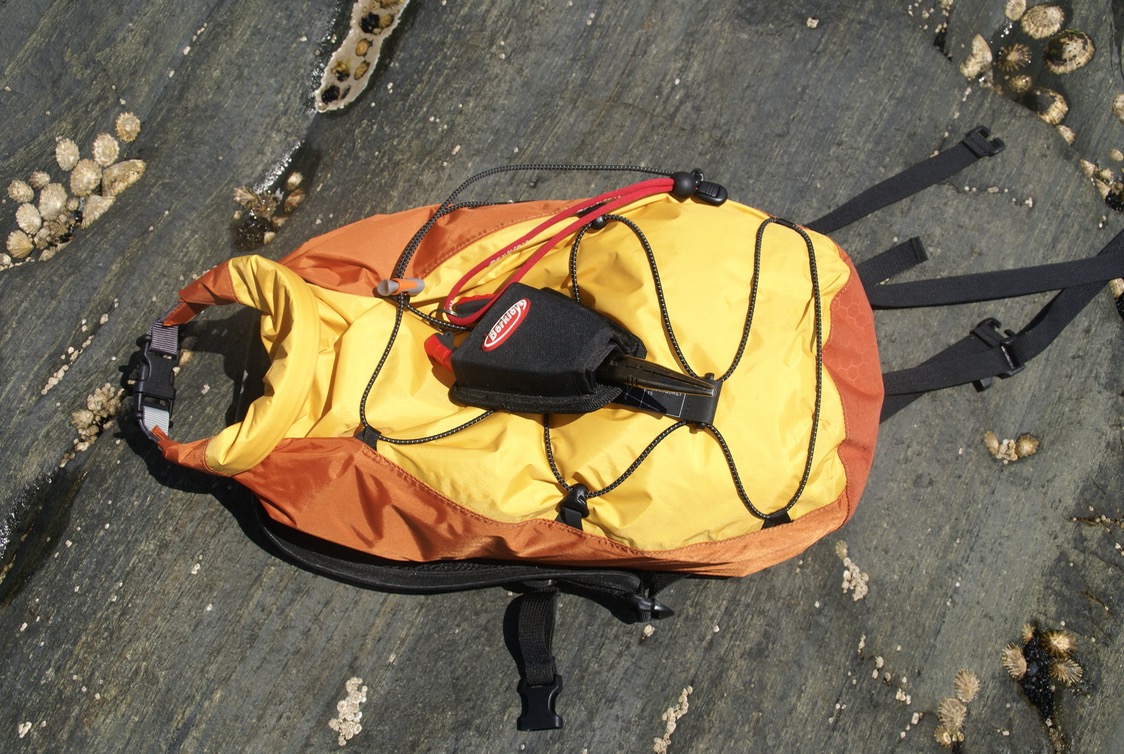
Spinning, plugging and jigging are the best techniques to ensure a successful SUP fishing trip. The last thing you want to have to deal with on your SUP is bait!!!
Spinning is the term used when fishing with a weighted, silver piece of metal (known as a spinner). A spinner is excellent for casting or trolling. But remember it will sink and easily get caught on the sea bed so don’t stop paddling when you’ve got your line out!!
Plugging is the term used when fishing with a lure with a plastic angled front to it (known as a plug). As the plug is pulled though the water it gets forced down. Different plugs are made for different depths. The best plug for SUP fishing is one that dives to approx 2m. Plugging is good for both casting and trolling. And plugging is perfect for SUP fishing because most plugs float and therefore when you stop paddling they don’t sink and get caught on the sea bed! This is my preferred fishing method, and many large fish can be caught this way.
Jigging with feathers is the other way to fish on a paddleboard. Paddle out to a deep area of water and pull your feathers up and down on the spot. This is a really good way to catch Mackerel. Feathers with the colour silver in them are best for this.
If you are wanting to go fishing but also have a decent paddle at the same time, then trolling using either your hand line or rod is a great method. Cruise along the coast at about 2knots trolling a plug or spinner at about 30m behind your SUP. You can use weighted feathers but be careful not to catch the bottom! It’s best to stay in deep water about 15m +. Coloured feathers are the best for trolling.
“The species of fish you will commonly expect to catch when SUP fishing in the UK summer are Bass, Mackerel, Pollack and Rasse.”
Obviously… you can go fishing anywhere there’s water, and provided your are not breaking fisheries laws but to catch a fish you’ll first have to find the fish! Although you may think that they do, fish don’t just swim around aimlessly. They are in certain spots for a particular reason… normally because there is food there and protection from predators.
So the first thing you need to figure out is… which fish are where?
Bass are by far the best fish to eat, but are often thought to be the hardest to catch. SUP fishing is definitely one of the best ways to catch Bass because the places Bass generally hang out are easily accessible by paddleboard e.g around rocky sandy coast lines close to shore, which are difficult to access by boat and from the shore. This is because Bass go to little sandy bays and rocky outcrops to hunt for food like Sandeels, Sprats, Worms, Crustaceans and small fish. By using a SUP to fish, you can not only get to these fishing areas easily but you are also less likely to scare the fish away by making little or no noise (ideally!). So the fish will stay in the area for longer giving you a better chance of catching one! They will only move onto the next area if there is no food or they get spooked. Smaller Bass are call schoolys because they are found in groups (schools) and are generally up to 2 1/2 lb. Large Bass are usually more solitary. Bass are most active in the morning and evening. They will also feed more aggressively if the water visibility is bad, because there is less chance of them being eaten by predators e.g ganets,cormerants and seals. But Bass have very good eyesight so they will still be able to see your lure in the water. On a day with clear skies and good water visibility they we be harder to get to bite and therefore catch! Most fish are like this. Bass are slow growers, so there is a minimum keep size of 37.5 cm at the moment. However size limits do change and vary from region to region in the UK. It’s very important to keep to the size limit to ensure there are more fish in the future and plenty for all of us to enjoy. Post update 01/02/16 New Bass legislation. From the 1st of January to the 1st of July it’s an illegal offence to take or keep any Bass (catch and release only) . And after this date, you may only keep 1 fish a day that is over the new minimum size limit of 42cm.
Bass Tip… Look out for the rocky outcrops surrounded by a sandy bottom.
So, now you know what equipment you need, where to go and what you’re going to catch… all that’s left to do, is to go and give it a go! Get out there, have fun and catch some fish. Good Luck.
